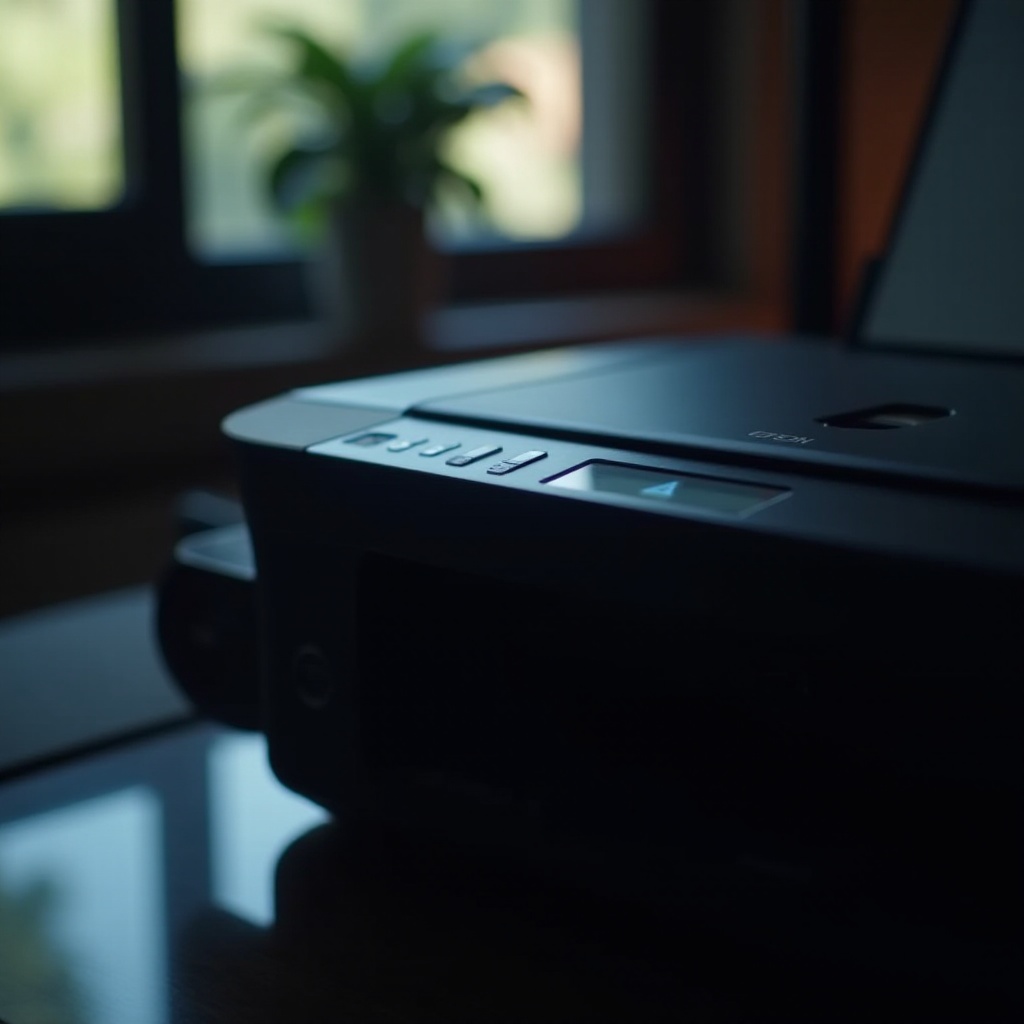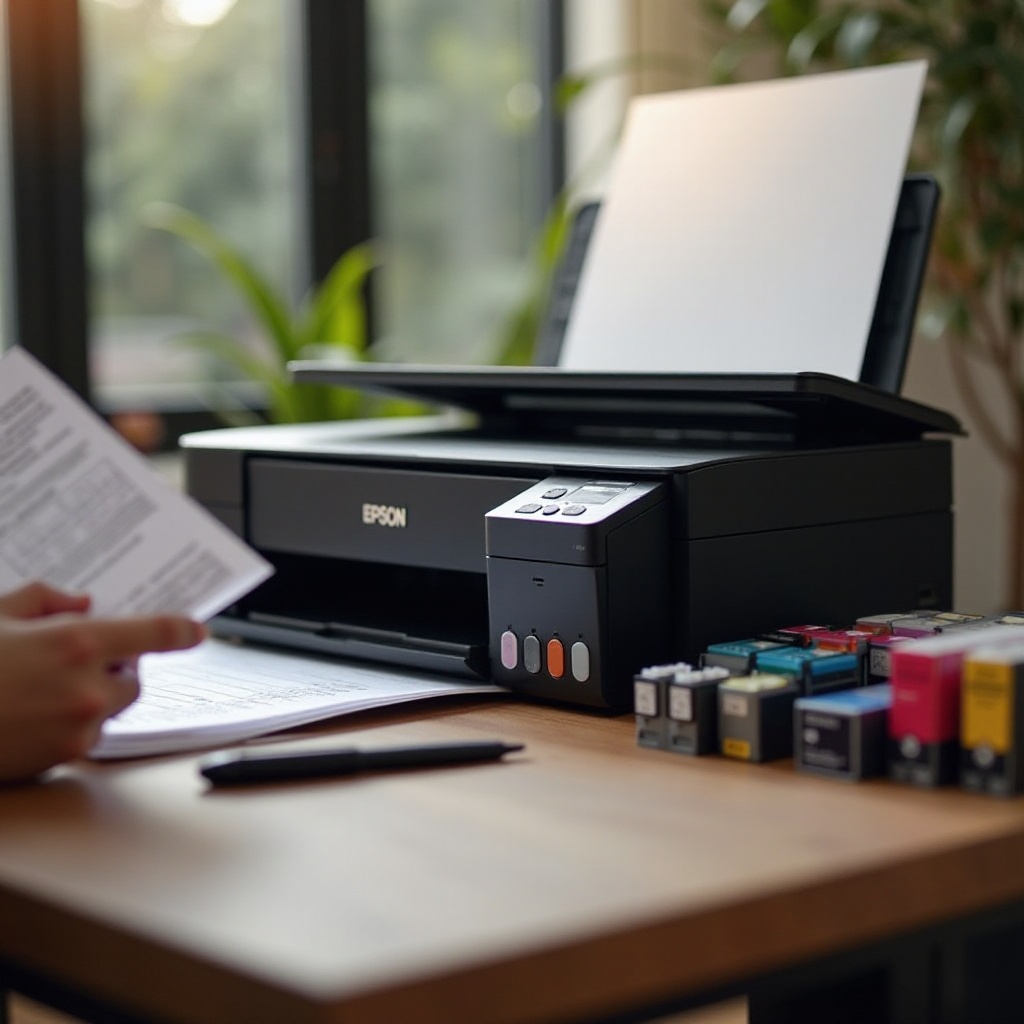Introduction
Epson printers, known for their reliability and superior print quality, sometimes face the vexing issue of not recognizing ink cartridges after a firmware update. This problem can cause significant disruption to your workflow and generate unnecessary technical challenges. Successfully addressing this issue involves understanding its roots and knowing the steps to resolve it. This article delves into the implications of firmware updates on your printer’s cartridge recognition, provides a comprehensive guide through troubleshooting steps, outlines advanced solutions for persistent problems, and offers preventive strategies to avoid future frustrations. Whether you’re currently experiencing this issue or aiming to prevent it from occurring, this guide equips you with practical solutions and preventive measures.

Understanding the Impact of Firmware Updates on Ink Cartridges
Firmware updates are essential for maintaining your printer’s performance and security. These updates can upgrade printing quality, introduce novel functionalities, and enhance compatibility with other software. However, they may inadvertently lead to your printer failing to recognize ink cartridges. This situation often arises because firmware updates might alter the printer’s restrictive settings, making it warier about the cartridges it accepts. Incompatible cartridges, third-party alternatives, or refilled ones may struggle to meet these revised criteria, leaving users frustrated and searching for effective solutions. By understanding these underlying causes, users can adopt the appropriate measures to align firmware functionalities with cartridge performance.

Initial Troubleshooting Steps
Quickly addressing ink cartridge recognition issues after a firmware update can prevent the escalation of the problem. Here are some initial troubleshooting steps you can take:
Re-checking Cartridge Installation
Begin by verifying that the ink cartridges are installed correctly.
- Access the printer’s cartridge compartment and ensure each cartridge is seated snugly.
- Reinsert the cartridges firmly, ensuring you hear clicks or confirmation sounds.
- Refer to the printer manual for correct installation instructions if needed.
Power-Cycling the Printer
A simple power cycle can sometimes clear temporary memory, resolving recognition problems.
- Turn off the printer and disconnect it from the power source.
- Wait for at least 30 seconds before reconnecting and powering it on.
- Check if the printer now recognizes the cartridges.
Inspecting and Cleaning Cartridge Contacts
Dirt or residue on cartridge contacts can hamper recognition, necessitating cleaning.
- Carefully remove the cartridges and examine the contacts for any dirt.
- Clean the contacts gently using a lint-free cloth lightly dampened with distilled water.
- Reinstall the cartridges and test if the problem persists.

Advanced Solutions for Persistent Issues
If the initial troubleshooting steps don’t yield results, consider advanced solutions to restore proper functionality.
Checking for Additional Firmware Updates
Sometimes new updates are released to fix bugs in previous versions.
- Visit the Epson support website.
- Check for pending firmware updates that may address the recognition issue and install them.
Resetting the Printer Settings
Resetting your printer’s settings to their default state can sometimes solve recognition issues.
- Access the printer’s settings menu.
- Look for an option to reset to default or factory settings.
- Follow the instructions to complete the reset and check if the cartridges are recognized.
Using Compatible Cartridges and Testing Their Usability
Ensuring cartridge compatibility post-update is crucial.
- Purchase a set of Epson-approved cartridges.
- Replace existing ones to see if the printer recognizes them.
- If successful, continue to use compatible cartridges for future replacements.
Preventive Measures for Avoiding Future Problems
Incorporating preventive steps can help reduce the likelihood of future cartridge recognition issues.
Monitoring Firmware Update Notices
Stay ahead by keeping informed on firmware updates.
- Sign up for email updates from Epson about firmware releases.
- Review the potential impact of updates before installing them.
Ensuring Cartridge Compatibility
Always confirm compatibility to avoid post-update recognition problems.
- Buy cartridges only from reputable suppliers known to align with Epson standards.
- Verify cartridge compatibility via Epson support before making a purchase.
Regular Maintenance Tips
Routine upkeep of your printer can prevent issues related to cartridge recognition.
- Frequently clean cartridge contacts and other printer components.
- Conduct periodic testing to ensure all printer functions operate smoothly.
Conclusion
Tackling ink cartridge recognition problems after a firmware update requires informed patience and strategic action. By comprehending how firmware updates impact your cartridges, methodically troubleshooting, implementing advanced solutions, and adopting preventive measures, you can effectively resolve these challenges. Remaining proactive and well-informed will ensure smoother printer operations, minimizing disruptions in your print tasks.
Frequently Asked Questions
Why does my Epson printer not recognize my new ink cartridge?
The issue may stem from compatibility problems post-firmware update or incorrect installation. Ensure you use Epson-approved cartridges and check their proper installation.
Can I roll back an Epson firmware update?
Typically, rolling back firmware updates is not possible. However, contacting Epson support may provide guidance or alternatives for your specific situation.
Are there risks in using third-party ink cartridges after an update?
Using third-party cartridges can lead to compatibility issues, as updates may alter the printer’s acceptance criteria. It’s best to use original cartridges to avoid such risks and ensure consistent print quality.